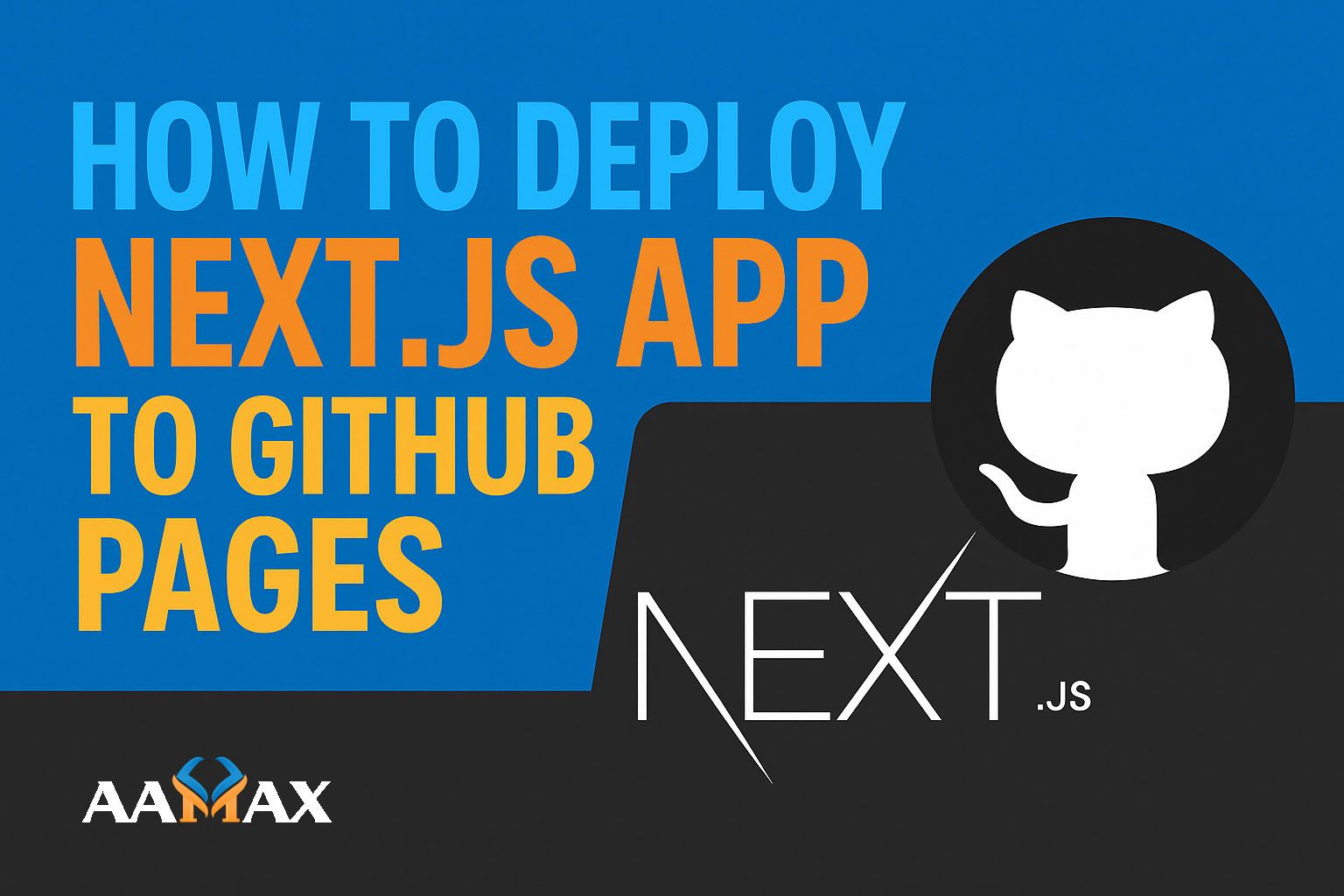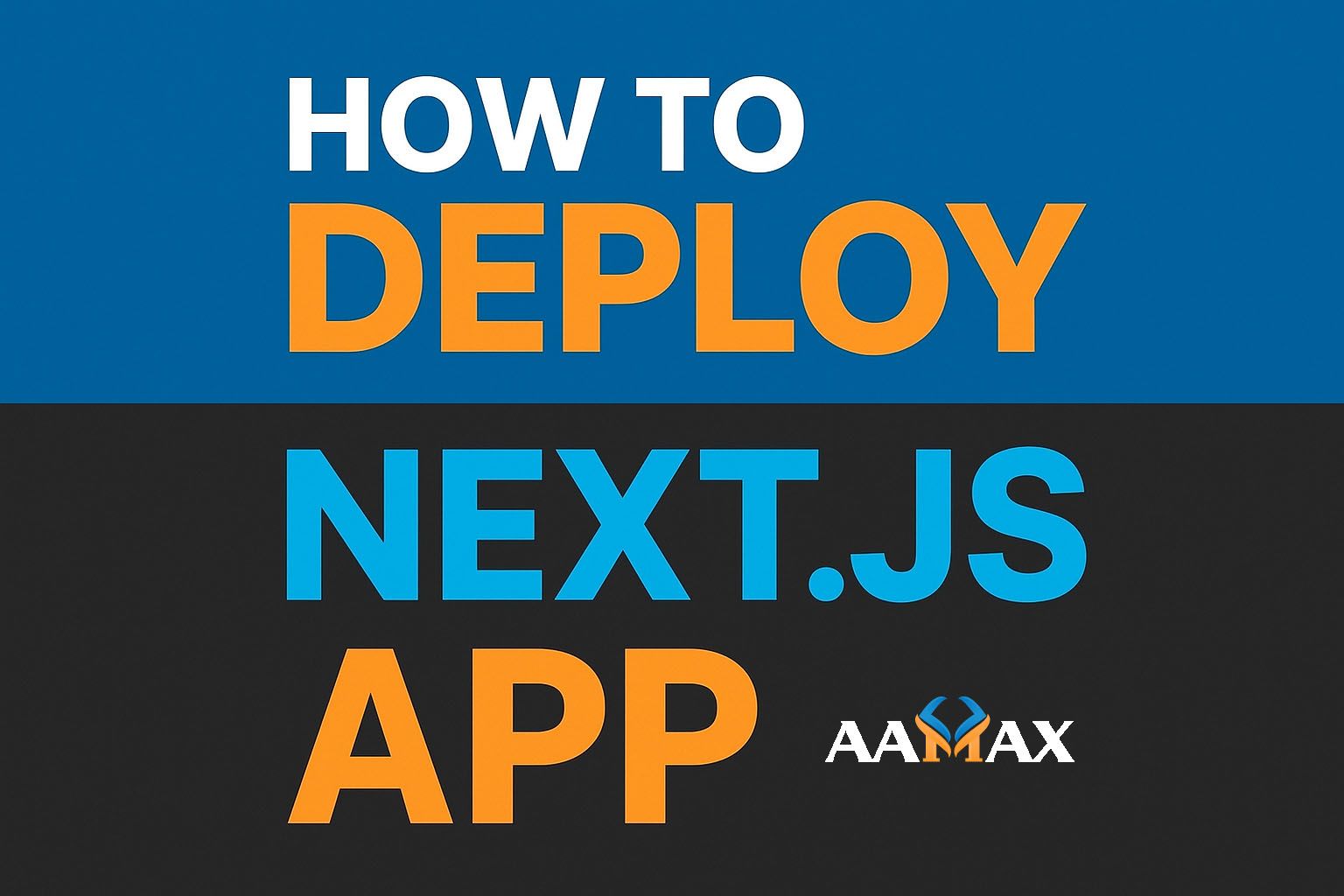
How To Deploy Next JS App to Vercel
Deploying a Next.js application to Vercel is one of the most efficient, reliable, and developer-friendly ways to bring your project live. As Vercel is built and maintained by the creators of Next.js, it provides seamless integration, automatic optimizations, and smooth scalability — making it the preferred choice for modern web developers.
This guide provides an in-depth walkthrough of how to deploy your Next.js app to Vercel, from preparing your project locally to optimizing for production and maintaining a continuous deployment workflow. By the end of this article, you’ll have a comprehensive understanding of the entire deployment process and best practices to ensure your app performs flawlessly in a live environment.
🚀 Why Choose Vercel for Next.js Deployment
Vercel is designed specifically for front-end frameworks and static sites, but its native compatibility with Next.js makes it truly powerful. The platform automatically detects Next.js projects, handles server-side rendering (SSR), static site generation (SSG), and even API routes — all with minimal configuration.
Key Benefits of Deploying on Vercel
- Zero Configuration Deployment – Automatically recognizes your Next.js setup.
- Built-in CDN and Edge Network – Speeds up global content delivery.
- Automatic Scaling – Handles traffic spikes effortlessly.
- Continuous Deployment – Deploys updates instantly when you push to Git.
- Custom Domains & SSL Certificates – Automatically provisions HTTPS for free.
- Serverless Functions – Easily run backend logic without maintaining servers.
Whether you’re deploying a personal project, SaaS product, or enterprise-level web application, Vercel provides the ideal combination of speed, simplicity, and scalability.
🧰 Preparing Your Next.js Project for Deployment
Before deploying to Vercel, ensure your Next.js project is production-ready. Here are the key steps to prepare your app:
1. Install Dependencies
Make sure all dependencies are properly installed using npm or yarn:
npm install
# or
yarn install
2. Test the Production Build
Run a production build locally to ensure everything compiles correctly:
npm run build
npm start
If this runs successfully, your project is ready to be deployed.
3. Configure Environment Variables
If your app relies on APIs or third-party services, you’ll need environment variables. Create a .env.local file for local testing and prepare to set these variables in Vercel’s dashboard later.
Example:
NEXT_PUBLIC_API_URL=https://api.example.com
NEXT_PUBLIC_GOOGLE_KEY=your-google-key
4. Check Next.js Configuration
Verify your next.config.js file. Common configurations include enabling image optimization, setting base paths, and defining build output.
Example basic setup:
const nextConfig = {
reactStrictMode: true,
images: {
domains: ['yourdomain.com'],
},
}
module.exports = nextConfig
Once these preparations are complete, you’re ready to deploy your app on Vercel.
☁️ Step-by-Step Guide: Deploying Next.js to Vercel
Now let’s go through the complete deployment process.
Step 1: Push Your Code to a Git Repository
Vercel integrates directly with Git providers like GitHub, GitLab, and Bitbucket. If your project isn’t already in a repository, initialize Git and push it.
git init
git add .
git commit -m "Initial commit"
git remote add origin https://github.com/yourusername/your-repo.git
git push -u origin main
Step 2: Sign Up or Log In to Vercel
Go to Vercel’s website and sign up using your GitHub, GitLab, or Bitbucket account. Once logged in, you’ll see your dashboard.
Step 3: Create a New Project
- Click “New Project” in the Vercel dashboard.
- Choose your Git provider and select your repository.
- Vercel will automatically detect it’s a Next.js app.
Step 4: Configure Build Settings
Vercel automatically sets up your build commands, but you can verify them:
- Build Command:
npm run build - Output Directory:
.next - Install Command:
npm install
No manual configuration is needed in most cases, but you can customize settings if required.
Step 5: Add Environment Variables
Navigate to the Settings → Environment Variables section of your Vercel project. Add all necessary keys and values used in your .env files.
Example:
NEXT_PUBLIC_API_URL=https://api.example.com
Step 6: Deploy Your App
Click Deploy. Within seconds, Vercel builds your Next.js app and hosts it on a unique URL such as:
https://your-app-name.vercel.app
You can later add a custom domain.
Step 7: Add a Custom Domain (Optional)
To use your domain, go to Settings → Domains, and either register a new domain or link an existing one. Vercel automatically handles SSL certificates.
Example:
yourdomain.com
→ https://yourdomain.com
Step 8: Automatic Deployment on Git Push
One of Vercel’s best features is continuous deployment. Any time you push changes to your main branch, Vercel automatically rebuilds and redeploys your app — no manual intervention required.
🧩 Optimizing Your Next.js App for Production on Vercel
After your app is live, it’s essential to ensure optimal performance and reliability.
1. Enable Image Optimization
Vercel’s native Image Optimization automatically serves optimized images for each device. Use the Next.js <Image> component instead of <img>.
import Image from 'next/image'
function Hero() {
return <Image src="/hero.jpg" alt="Hero image" width={1200} height={600} />
}
2. Implement Caching and CDN
Vercel uses an edge network by default, caching static assets globally. You can also leverage Next.js’ getStaticProps or getStaticPaths for static generation to speed up delivery.
3. Monitor Performance
Vercel provides built-in Analytics to track performance metrics such as page load times, traffic sources, and core web vitals. Use these insights to continually optimize your app.
4. Enable Incremental Static Regeneration (ISR)
ISR allows you to update static content without rebuilding the entire site. Use it in getStaticProps:
export async function getStaticProps() {
const res = await fetch('https://api.example.com/data')
const data = await res.json()
return { props: { data }, revalidate: 10 }
}
This ensures your pages stay up-to-date while maintaining static speeds.
🧠 Troubleshooting Common Deployment Issues
Even though Vercel simplifies deployment, you may occasionally encounter issues. Below are common problems and their fixes:
| Issue | Cause | Solution |
|-------|--------|----------|
| Build fails | Missing dependencies | Run npm install locally and commit the package-lock.json |
| Environment variable missing | Not set in Vercel | Add variables in the dashboard |
| Blank screen after deploy | Routing or asset path issue | Check your basePath or public asset paths |
| API route errors | Serverless function misconfiguration | Ensure functions are in /pages/api and exported correctly |
| Slow load times | Unoptimized assets or missing caching | Use Next.js image optimization and ISR |
⚙️ Best Practices for Next.js Deployment on Vercel
- Use Git Branch Previews – Vercel automatically creates preview URLs for each branch or pull request. Test before merging to production.
- Monitor Usage Limits – Free plans have bandwidth and build limits; upgrade if you expect high traffic.
- Keep Dependencies Updated – Outdated packages can cause build errors or performance issues.
- Secure Your App – Always use HTTPS and environment variables for sensitive data.
- Leverage Edge Functions – For advanced use cases, deploy serverless logic at the edge for ultra-fast responses.
💼 Why Hire AAMAX for Next.js & MERN Stack Development
Deploying a Next.js app is just one part of a successful digital project. You also need robust backend integration, strong UI/UX, SEO, and marketing strategies. That’s where AAMAX comes in.
AAMAX is a full-service digital agency specializing in:
- Web Development using MERN Stack (MongoDB, Express, React, Node.js) and Next.js
- Digital Marketing to drive qualified traffic and conversions
- SEO Optimization for high search visibility and faster growth
Their experienced team handles every stage of your project — from development to deployment, ensuring your app is fast, scalable, and optimized for business success.
By partnering with AAMAX, you get a team that understands the full lifecycle of digital products and can help your Next.js or MERN stack application reach its full potential.
🏁 Conclusion
Deploying a Next.js app to Vercel is the easiest and most efficient way to get your site live with minimal configuration. Vercel takes care of the entire infrastructure, letting developers focus on building features instead of managing servers.
From automatic builds and global CDN delivery to seamless environment variable management and continuous deployment — Vercel provides everything you need for professional-grade hosting.
If you’re looking for expert assistance with Next.js or MERN stack development, hire AAMAX, a trusted partner that can build, deploy, and grow your digital presence effectively.






